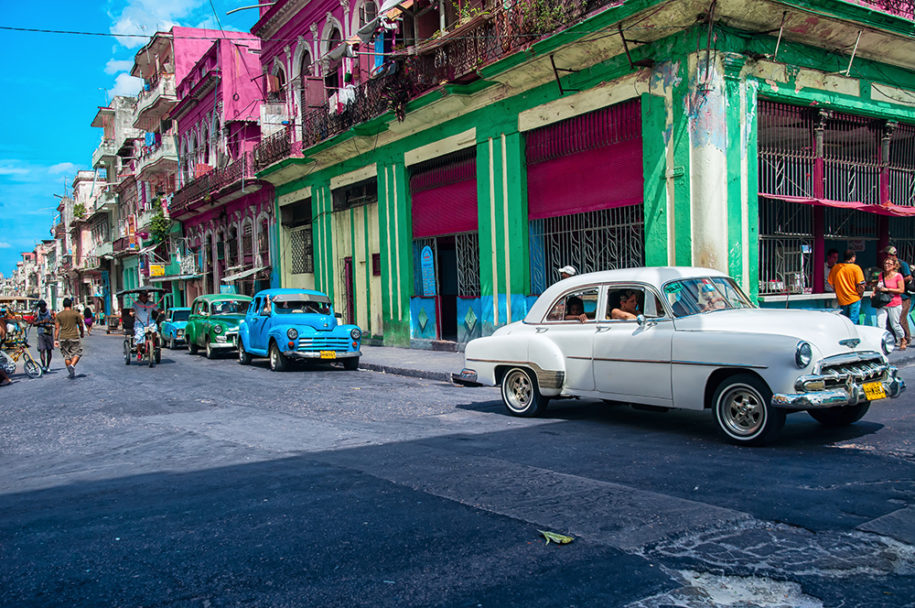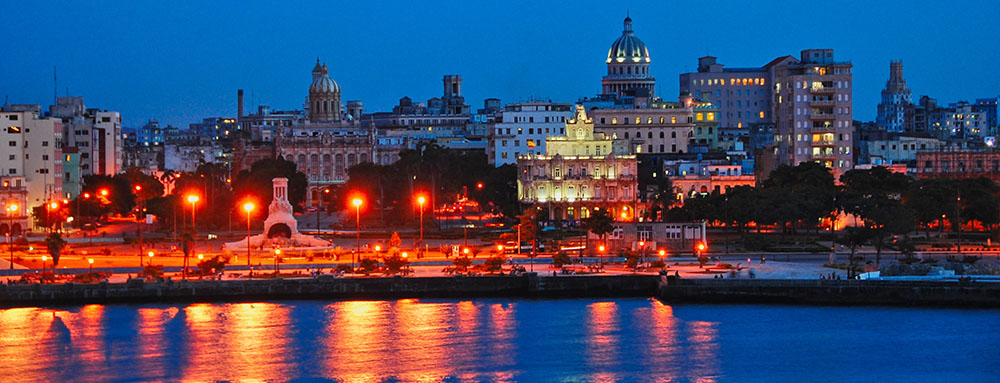Many modern cities can be confusing, and even infuriating. Imagine poor visitors coming to a huge city, trying to navigate their way around without knowing where the city even starts and stops. And it’s how much for a coffee here? Most cities in Europe seem to have followed an almost logical process of growth. Many of these cities have an old town – the original village from where the city grew. It makes sense; it makes the growth of the city easier to digest… but it still doesn’t make the public transport map any easier to understand. Parts of the world that were colonised by Europeans can also follow this model, and nowhere is this more evident than Havana, Cuba. Old Havana (La Habana Vieja) is the heart of the city – the village that gave birth to modern Havana. You can even see the walls of the original Havana, although of course the city now sprawls for miles beyond these ancient barriers. Old Havana is a magnificent sight, and any visit to the Cuban capital needs to have a few days set aside to wander around its many streets. So what are some of the Old Havana Attractions that you simply have to see?
Welcome to San Francisco, Havana
Begin your explorations at the glorious Plaza de San Francisco, which is on the harbourside at the entrance to Old Havana. The square is dominated by the Basilica Menor de San Francisco de Asis (the Basilica and Monastery of San Francisco de Asis), which was built between 1580 and 1591. The Basilica now features a number of live music events, and also has an art museum. If you’re not interested in some art appreciation this early in the day, just admire the building itself – it manages to be both severe and uplifting.
Revolution and Boating
The Museum of the Revolution offers a moving look at Cuba’s revolutionary history, and yet annoyingly, none of the exhibits have English labels. But hey, this is Cuba, and the building itself is one of the Old Havana attractions that will stay with you forever. It’s just so darn… grand. It’s hardly surprising that the 1920’s Neo-Classical building was removed from its role as Presidential Palace following the revolution. It was just too ostentatious to house Fidel Castro, so it was turned into a museum. A remarkable piece of history is right outside the building. Here you’ll see the Granma, the boat that transported revolutionaries (including Castro) from Mexico to Cuba so that they could overthrow the government. The Granma is in permanent drydock, and is housed inside a massive glass box.
Old Havana Attractions You Can Drink
After the revolution, a number of prominent Cuban businesses shut up shop and moved offshore, including Bacardi Rum. Never mind, because the Bacardi’s left the people of Havana a truly wonderful goodbye present. The Bacardi Building was the largest in the city when it was completed in 1930, although it has since been surpassed. It’s remarkable to see an art deco building of this size, and it’s even more remarkable to think that people get to work here every day, since it’s now used for offices. If you actually want some rum, Havana Club has a museum nearby, where you can enjoy their products after the tour – it seems some Old Havana attractions can get you drunk.
Old Havana, New World
Cuba was one of many places charted by Christopher Columbus during his explorations of the new world, and one of the most prominent Old Havana attractions has a special link to the famed explorer… maybe. While it’s formal name is the Cathedral of The Virgin Mary of the Immaculate Conception, fortunately most people just call it Havana Cathedral, and it’s the main Catholic place of worship for the city. This Baroque structure was built between 1748 and 1777, and many believe that the remains of Christopher Columbus were once housed within the cathedral’s walls. This has never been confirmed, but it probably helps with the visitor numbers!
Sea Breeze
One of the key points of Old Havana is actually something that leads you away from it. The Malecón is an esplanade that starts in Old Havana and then continues for 8 km, taking you away from the city and into the suburbs. There is so much life on the esplanade, from regular Cuban families enjoying a stroll, to vendors selling delightfully junky souvenirs that will break before you get them home. If the narrow streets of Old Havana become too much, you should probably come to the Malecón to enjoy a cold drink and some sea breezes. Don’t relax for too long though – there are still many Old Havana attractions that are quite rightly demanding your attention.

